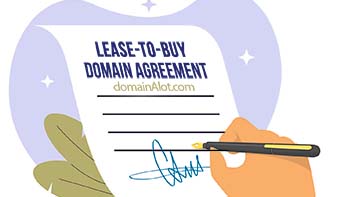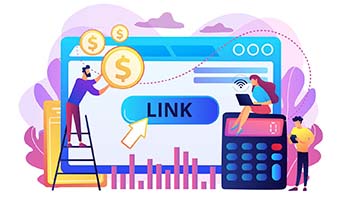Is Domain Flipping Still Profitable in 2025?
A Dead Trend Or A Hidden Opportunity

Over the past two decades, the domain name industry has evolved significantly, but not always in ways that benefit domain owners. What started as a relatively open marketplace has gradually morphed into an environment dominated by a handful of players that are themselves, giant registrars. These companies have managed to gain control not only over domain registration but also the lucrative aftermarket, where domains are bought and sold after their initial registration.
The rise of high-commission domain marketplaces controlled by these registrars marks a fundamental shift in how domain owners are able, and can expect to monetise their digital assets, often to their own detriment.
The Hostage Takers
The story begins with the explosive growth of the internet in the late 1990s, as businesses and individuals realised the importance of owning a memorable domain, demand soared.
Initially, this demand was fuelled by entrepreneurs who were first to market and knew that leading companies would, at some point, need to establish an online presence in order to promote their brand(s). By buying up the limited variations of all Top Level Domains (TLDs) that were available at that time, situations arose where many large, global conglomerates were essentially held to ransom in order to acquire their operations name and well-known brands. So began the stories. The ubran myths and belief that the internet was the new frontier, only now, .com was the new gold.
Stories of million dollar payouts spread. News of companies desperate to gain their brand name in domain form made perfect sense, not only in an effort to control their digital brand, but to prevent competitors acquiring and misusing it for their own competitive gain.
This was a time of few regulations and much speculation, and it wasn't only in the world of domain registration. The web was new. And while many business owners didn't understand it, or had no idea what an email was, they knew that they had to be online. Web companies emerged every other day promising to transform the fortunes of small businesses and secure the legacy of larger ones. Tech-savvy developers hid more popular brand names and search terms on pages by simply using the same colour font as the background, stuffing pages with content while the user saw nothing and their web pages shot up SERPs.
Blackberry phones emerged, WAP technology was going to transform the web to mobile phones. And companies struggled with traditional means of branding exposure.
An Industry In The Making
As law suit after law suit followed, trademark regulations modernised, and the Digital Millennium Copyright Act came into place to create a fairer playing field. After all, why should someone be allowed to profit from acquiring the name of a brand that is owned by another and only popular due to efforts made historically in promoting it?
Technology like Flash animation came and went, quickly followed by must-have publishing platforms and e-commerce solutions. Suddenly, brands saw the need to segment, experimenting with various names and profiles in the digital space as they tried to reach new customers, users and groups. Others saw the immediate difficulties in trying to use traditional brand names that were simply too difficult, or cumbersome to type, and would rebrand entirely. Amidst all this, came the rise of a whole new wave of digital companies. Startups offering digital based products and services. Investment and hype was unprecedented, and those companies, well, they all needed names, but more importantly, they needed a domain.
The future was uncertain. It changed daily. But one thing was clear. When it came to domain names, the shorter the better. Survey after survey confirmed this, and showed the revenues being lost because of users mistyping long domain names. So, in the new digital age, if you wanted to compete, you needed a catchy brand name that users would easily recall and type. Competing was fine, but if you wanted to win, you needed the shortest domain name possible, paired, naturally with a .com. That was the only recipe for success. The only sure fire way to succeed.
Field Of Dreams
Whereas domain registrations had mostly been focused upon existing brand names, this new wave of internet startups and services sparked a flurry of domain registrations that had nothing to do with household brands. These new brands were driven by availability. If "thisdomain.com" was taken, no problem, the company would need to be called, "tdomain.com", or better still, "tdom.com." And because the vast majority of these startups were micro-enterprises, the ability to pivot and rebrand at a minute's notice was built into their agile game-plans.
At the same time, the complexities of registering a domain eased. Normal, non-technology based individuals could simply log onto a web site, check if a domain was available, and register it. Which was great, because they had to. You see, everyone, everywhere had been sitting on an idea, or maybe several, for companies, products and services for years.
While traditional production, marketing, and sales channels had meant those ideas could never be realised, the always on, always open internet now meant that those dreams could become a reality, and the first-step in realising any dream was, you guessed it, getting the right domain name, because it all starts with the name.
The numbers of domain registrations exploded, and the internet was growing rapidly.
The Rise Of Domain "Flipping"
A secondary market emerged, where speculators now bought domains in their droves for the sole intention of selling them later at a profit.
Investors established portfolios of domains while actively hunting for expired and expiring domains. Free to sell them on for whatever value they believed their assets to be worth. In fact, initially, the resale of domains was fairly decentralised. Independent marketplaces and auction sites popped up, providing domain owners with options to list and sell their names, often at reasonable fees, and as a result, the real concept of "Domain Flipping" was born.
No Sea Without The Sharks
As the domain market matured, major registrars started to see a new business opportunity.
Companies like GoDaddy, NameCheap, and Tucows, which initially focused solely on domain registration services, began acquiring prominent aftermarket platforms. GoDaddy’s acquisition of Afternic, which was actually its fourth acquisition in a fourteen month period, is a prime example of how eager, not to mention aggressive, registrars were to acquire the aftersale market. The idea in itself was simple, and makes perfect business sense. Through consolidating registration and resale platforms under one roof, a registrar is able to create a tightly controlled ecosystem where they not only facilitate the sale but also impose significant commission fees, often ranging anywhere from between 20 to 30 percent of the final sale price. But it doesn't stop there. By adding a multitude of additional tiered payment services such as domain sale promotion, domain brokering, and even marketplace access membership fees, a registrar can ultimately restrict the visibility of a domain, the number of potential buyers able to buy the domain, and of course, impact the potential of any likely sale.
For the domain owner, the consequences of a monopolist system is far from ideal. Domain Flipping is arguably dead, at least to the vast majority of domain owners. Percentages and costs, together with the annual increases in domain renewals mean that it's no longer viable for domain owners to sit on domains for many years, and the returns from selling are greatly reduced once commissions are taken by the registrars. So, what does all this mean?
Same Story, Different Day
Many will say that the end of domain speculation is a good thing, but is it really the end? After all, people will always need domains, and domains will always need to be registered. The registrars know this. They need it, and are literally banking on it. So, in that respect they really can't allow the market to die because that would be the end of their business. But if they can't allow it to die, then what has actually changed? Well, in essence. Nothing. Only now the monies that were once the dividends of the domain owner, are shared to an ever-increasing degree with the registrar. The profits for the domain owner themselves might be harder to gain, and more often than not, gone. Flipping, however, as a concept, remains the same today as it always has. One needs only look at the current A.I trend to see domains being valued at the hundreds of thousands of dollars, many in the millions, and this is for words that are now not even words. Simply a collection of letters followed by .ai, and yes, you guessed it, the shorter the better, because apparently even robots mistype...




